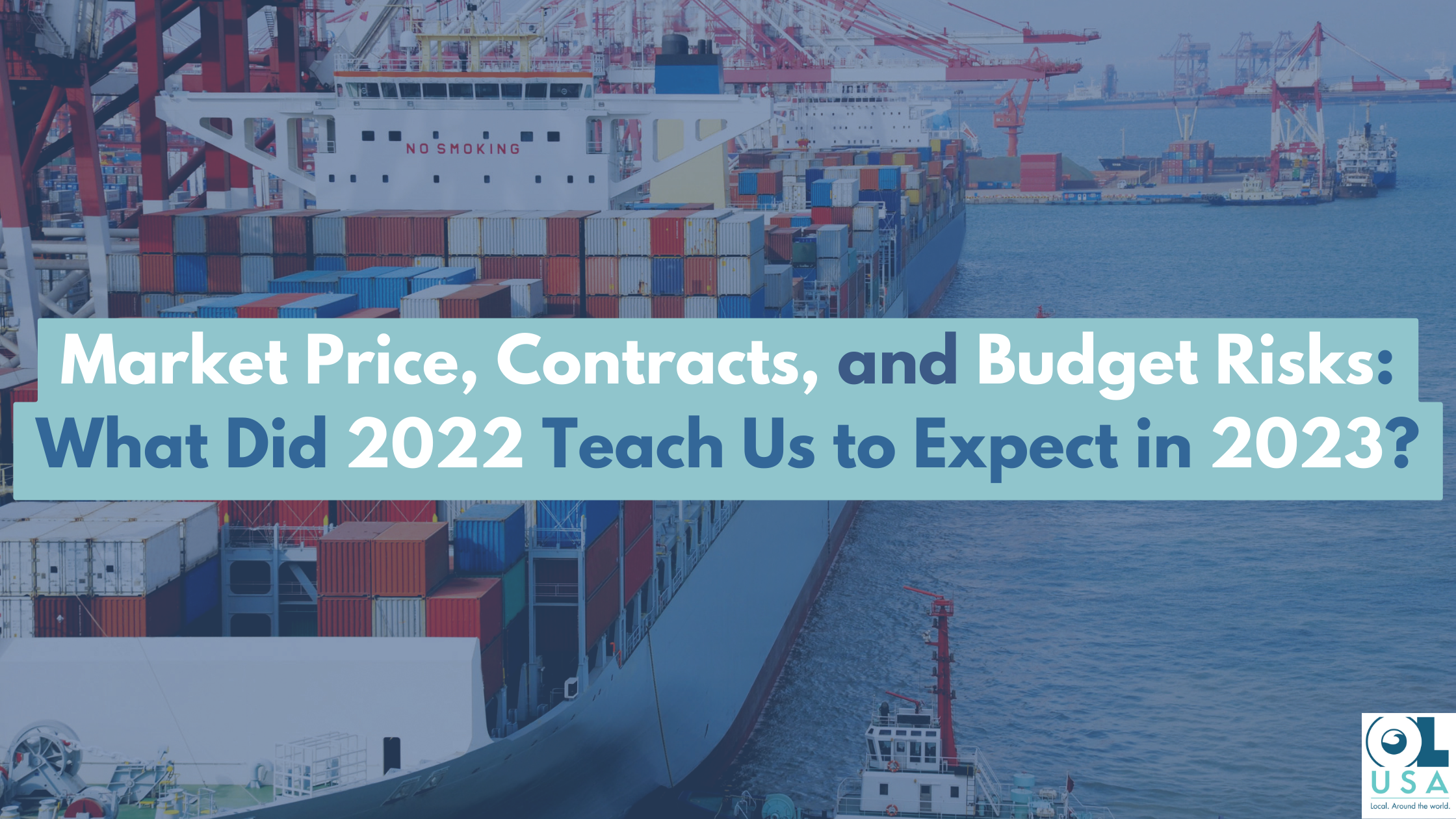Efficiency is extremely important to almost any business. It’s nearly impossible for businesses to scale without keeping an eye on costs in most aspects of their operations. So, naturally, that includes the cost of moving cargo—and that side of the industry has seen some serious ups and downs over the past couple of years.
It seems like our global economy encounters a Black Swan Event every couple of years for the past few decades. The pandemic set off a chain of events that some predicted, but many did not. In late 2021 and early 2022, we saw some impacts on the shipping and logistics industry that are going to change the way a lot of businesses allocate their shipping budgets in the future—including right now.
Spot vs. Bid: What Happened Last Year?
Historically, businesses have tended to work with ocean carriers on a contract basis. For example, if a retailer needs to ship 5,000 containers during the course of business for that year, they’ll typically negotiate with a carrier to handle the majority of that—often, that will be how about 80-85% of their containers will be priced. Businesses tend to do this early in the year, to lock in their rates and make sure they know what they’ll be spending on shipping.
The remaining 15-20% of their containers will usually be done on a more ad hoc basis—meaning they’ll be paying the standard market or “spot” price that’s available at the time. These rates are variable, and change based on the conditions on the ground (or in the water, or in the air), including availability. Sometimes these rates are higher than their contracted rates, but sometimes they’re lower.
If you don’t remember (it’s hard for us to forget), the tail end of 2021 and the beginning of 2022 saw a tremendous shipping crunch. Prices spiked, because availability had dropped precipitously. The contracted rates at the beginning of 2022 were, therefore, much higher than they were at the beginning of 2021.
Some major retailers negotiated shipping contracts with carriers that had relatively high rates—some were paying upwards of $6,000 per container. That’s a significant commitment for smaller retailers, many of whom were then forced to choose between limiting inventory restocking and forgo contracts, or take a chance that the market price for shipping rates was going to drop later in the year.
It turned out well for those who waited. The average spot price by the end of Q2 last year had cratered, all the way down to below $1,500/container. For those keeping score, that’s a 75% drop per container after a few months, when the crunch eased and availability began to bounce back. But those who were locked into contracts were stuck paying the negotiated rate that was set during the crunch.
Some of those businesses who were stuck in those contracts actually found it was less expensive to break their agreements, pay whatever penalties they were obligated to, and find open shipping space at the regular market rate. It’s unusual for just about any industry to find itself in a position where it’s cheaper to pay out for a broken contract than it is to stick to it; that’s usually the point of a contract in the first place.
What Does That Mean for This Year?
The situation from last year has made businesses extremely cautious, which is not a bad thing. This is the season during which ocean carriers are usually negotiating their main customers’ rates for the rest of the year. But we’re seeing some significant departures from “business as usual.”
Whereas many importers and exporters used to blend their agreements to a mix of about 85% contracted rate and 15% spot rate, last year’s experience is changing the way they do that. Instead, some are going half and half, or even majority spot/ad hoc.
There’s risk doing things that way (or any way, for that matter). If you lean heavily on spot prices, you’re essentially betting that the rates will drop below what you’d be able to negotiate today. On the flip side, those who lean heavily on contracted rates are betting that the spot rate is going to spike later in the year.
These organizations are reading their tea leaves and examining the state of the world while they make their decisions. Is inflation going to continue being a concern? Will the political state of play stay the same, or will there be some upheaval in key regions? Will consumer demand increase, drop, or hold steady? Will existing inventory hold long enough, or will you need to restock sooner rather than later?
Every industry, sector, and individual business will have their own way of looking at these types of things, each with slightly different aspects that will matter to them. The Recreational Vehicle industry, for example, will probably focus heavily on their expectations for consumer demand (which dropped significantly during Covid, but is starting to rebound). Meanwhile, the clothing industry might be more concerned about their existing inventory than demand.
Whatever the case is, you need information before you commit to a strategy. We’ve always recommended working with a stable partner who will consult with you and all of the key players for your business, because that’s the right way to plan ahead. It’s extremely risky to make a decision unless you know the facts and consult with an expert. OL, as always, is ready to talk things over with you, give you the information you need, handle the negotiations on your behalf, and take care of all of the details for you.
To find out more, contact us! We’d love to talk.



